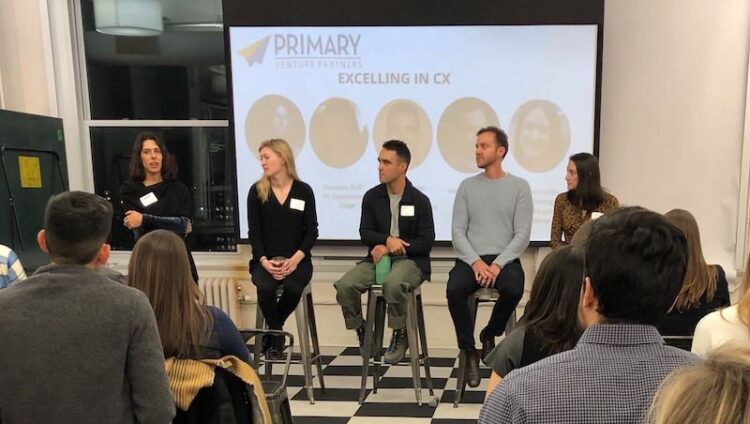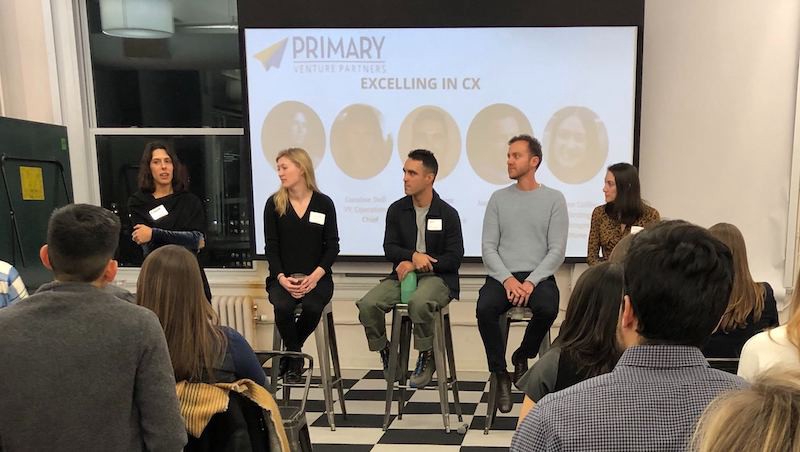We recently hosted a panel to discuss the backbone for any consumer business, Customer Experience. The CX function can make or break a brand’s reputation, build or destroy customer retention/loyalty, and can ultimately influence LTV.
We sat down with some fantastic and innovative CX leaders across various industries led by Eleanor van den Heuvel (National Director, COMPASS), Caroline Dell (VP of Operations, Chief), Jake Ramirez (CX Manager, Policygenius), Justin Sundheimer (CX Director, 1stdibs), and Lauren Collins (CX Strategy Manager, Attune). They broke down the current CX landscape (and how it has drastically changed in the past 5 years), shed light on what a CX career path can look like, and shared some tactical tools, applications, and strategies they’ve implemented successfully as well.
We put together some key takeaways from the discussion below:
The CX career path is changing
Historically, the ‘CX Agent’ is the role within the consumer brand for entry-level folks to get their foot in the door to gain some exposure, and enter into another function within the organization that doesn’t involve answering angry customer calls for 40+ hours a week. The only way to move up and forge a career path within CX was to be a people manager. Over the past 5–10 years, that narrative has changed.
Justin Sundheimer said, “The shift [started] as consumers became more comfortable being vocal to organizations. Now, they [CX] are at the wheel touching every other department and can turn that influence into a real career trajectory. They have access to qualitative feedback and play an analytical role, and they are aware of how the changes are being perceived.” Touching on a variety of roles that CX can lead into, Lauren Collins explained, “for 2020 planning, there are so many different roles now on the org chart. You can have a trainer, an analyst, an operations associate, charge-back roles. It’s no longer just a team lead into Director progression—you can still grow into CX owning a different function.”
The shift [started] as consumers became more comfortable being vocal to organizations. Now, they [CX] are at the wheel touching every other department and can turn that influence into a real career trajectory. They have access to qualitative feedback and play an analytical role, and they are aware of how the changes are being perceived.
Where CX sits in the organization impacts the dynamic
As CX becomes a much more process and data-driven piece of the organization, it tends to naturally sit within the Operations department of the business. Caroline Dell, previously head of Customer Experience at LOLA and now VP of Operations at Chief, can see the pros and cons of this structure. “On the one hand, it’s where the customer needs to be heard the most. It is also the liaison program, where you can forge feedback loops. On the other side of the spectrum, the core of the role is to build relationships with our customers and the involvement of operations can make it feel like a cost center, rather than a major driver that influences LTV.”
Justin’s advice for proving impact, especially when needing headcount within the organization, is to make your case “numbers-based, be exact with your headcount to workload ratio, and then you’ll be able to prove out a real need for your team. Your operations team won’t be able to quantify the stories of stressed and overworked team members. Speak to them in a way they understand.”
Keys to Success: Build a great team, keep morale up, and prove impact beyond a call center
Across the panel, everyone strongly agreed on two key points — the day-to-day in a CX agent’s world can be extremely taxing and it’s important to build a great company culture with a strong team.
Jake Ramirez said the “culture aspect is extremely important, building trust with the team and creating an environment and foundation that enables people to feel like we are all in it together will reflect in the overall team performance.”
Justin’s advice was “just try and understand what is going on in the lives of your team. If you’re having a really rough day in your personal life, it’s going to be hard to get on the phone and deal with angry customers.” Lauren agreed and also emphasized the importance of breaking up the day with emails and chats and building in time for special projects outside of customer calls.
As for measuring success, sometimes it can be hard to quantify exactly how much the CX team impacts the overall business, but Lauren suggested to start by “measuring the saves. How many customers did you save from churning? We’ve done competitions to also get the team excited. Start to figure out how to measure saved marketing dollars, which will lead to LTV and pull in competitive research to show where you might be lacking.”
Measuring the saves. How many customers did you save from churning? We’ve done competitions to also get the team excited. Start to figure out how to measure saved marketing dollars, which will lead to LTV and pull in competitive research to show where you might be lacking
We are super grateful to the panel for sharing their exceptional tips and insights into this ever-changing function. We particularly found it valuable to hear their advice on how to navigate a successful career within this space and become an advisor within a customer-obsessed organization.




